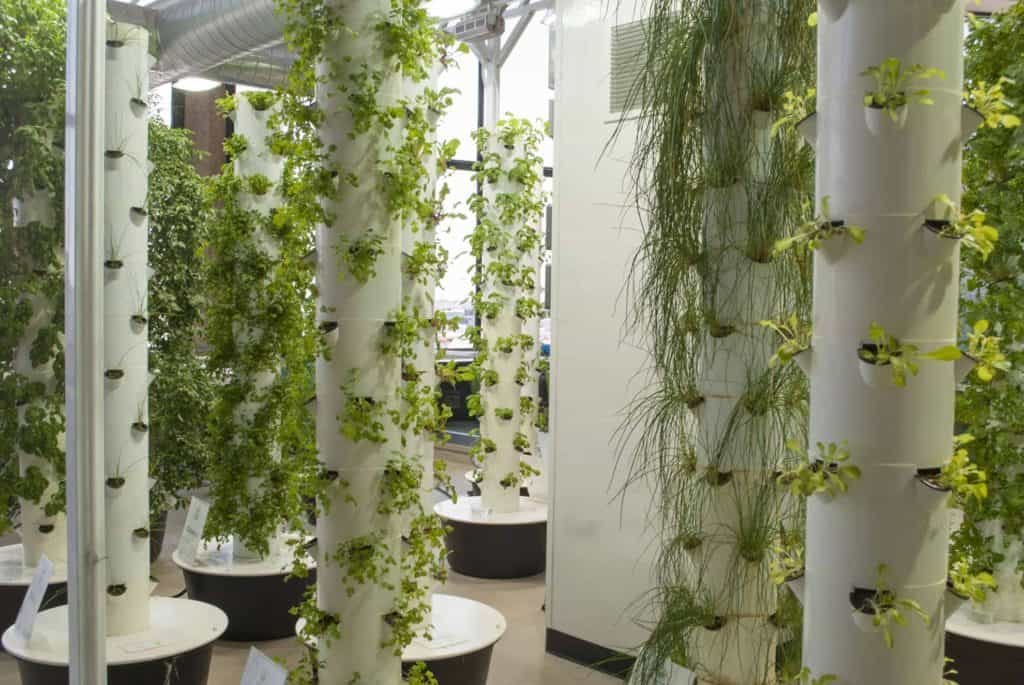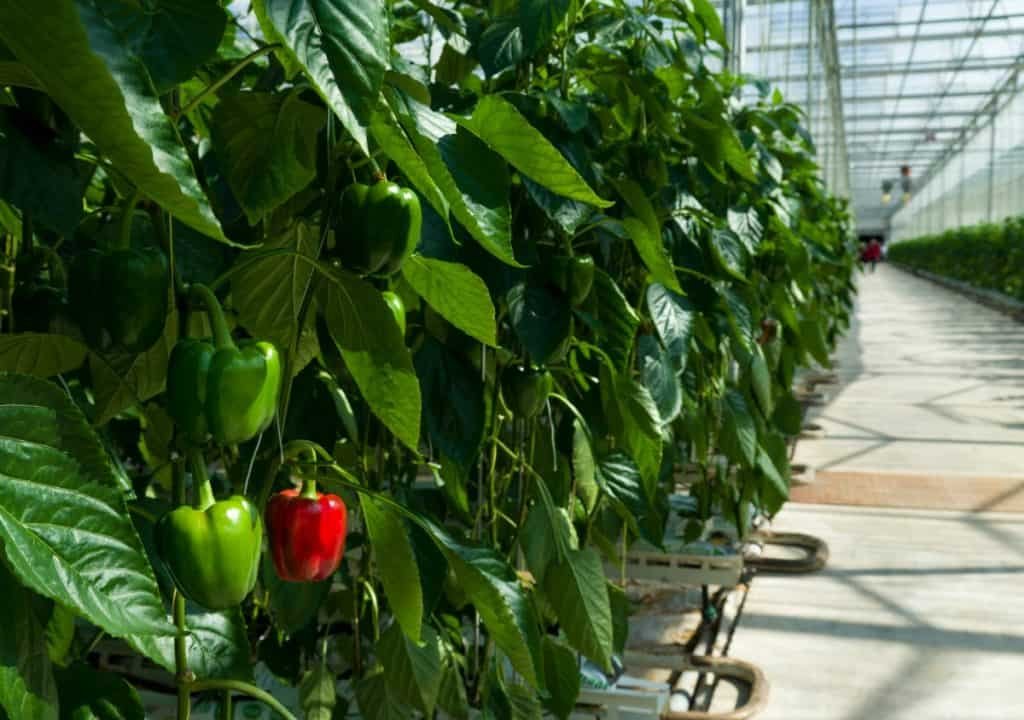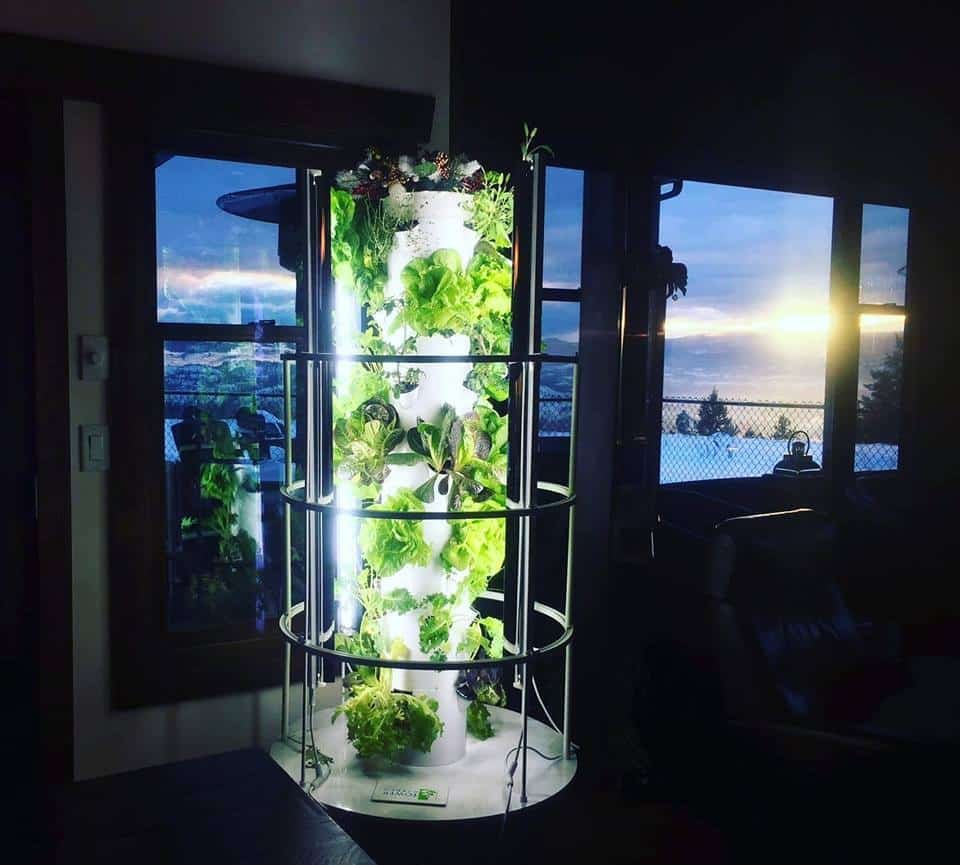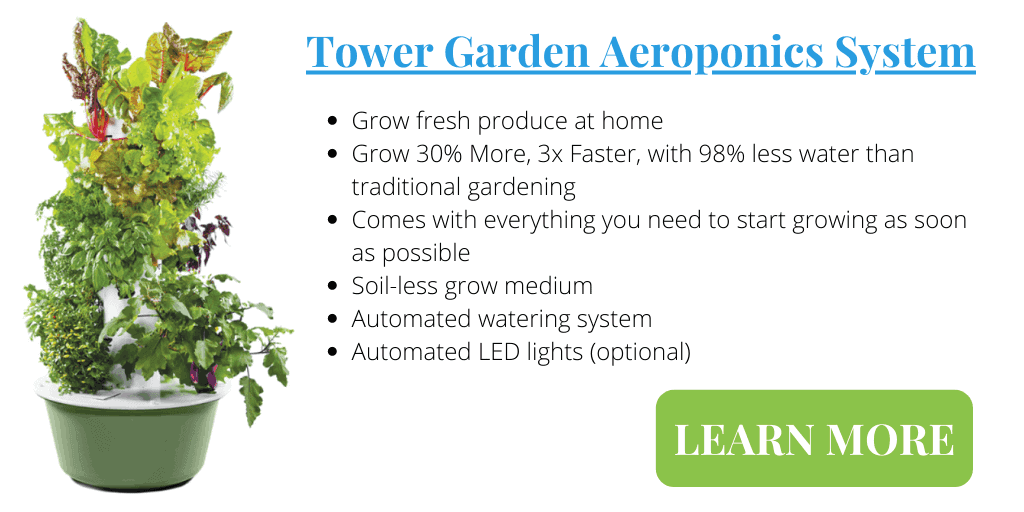Aeroponic growing systems provide large yields, save water, have a more efficient absorption of minerals and can grow nutritious food in very small spaces. With all these advantages it’s no wonder they’ve become so heavily adopted everywhere food is needed.
The use of aeroponic systems can be seen in environmentally conscious restaurants and eateries for fresh ultra local ingredients. Indoor commercial farms have been converting to aeroponics in large numbers to save money on water and fertilizer use. And we can’t forget organizations like NASA, Disney, top Universities and many other educational facilities who are accelerating the research and development in the aeroponic sector.
The explosion of interest in aeroponics is shared across many different sectors of the economy as well as for use by home gardeners and hobbyists. Let’s dig into the where and why of the situation…
Popular Places Where Aeroponics Gardens Are Used
Since the introduction of aeroponics in the 1940s, a lot of organizations and teams have been conducting research on this new concept.
Some of these companies started adding to the theory of aeroponics thanks to their live applications and usage of the method.
In the following list, I’ll walk you through some of the most popular companies that started aeroponic gardens for usage.

Research Epcot
We all know that Disney World in Orlando, Florida is one of the most magical places for having fun and enjoying your time. However, it also has one of the most innovative and advanced agricultural systems in the world!
The good news is, you can see this technology in action by taking the monorail ride over to Epcot Research Center. It stands for “Experimental Prototype Community Of Tomorrow”.
The research center contains over 2.5 million square feet of actively working greenhouses and it’s the origin of much of the food served in the park’s restaurants as well.
Almost the entire research plant uses the concepts of soilless farming, such as hydroponics and aeroponics.
Epcot found that aeroponics could be an excellent solution to growing food for long-term space missions. That’s why they’ve partnered with NASA to find new ways of growing more food using aeroponics systems.
NASA
As you already know, NASA is one of the pioneering organizations to have a deep interest in aeroponics. In fact, since the early 1990s, NASA has established a lot of experiments regarding growing food in soilless mediums and the effect of microgravity.
A lot of these experiments came positive, proving that you don’t need soil to produce greenery. In 1997, NASA sponsored various studies regarding growing Asian bean seeds aeroponically.
They found that aeroponics reduces fertilizer usage by about 60%, as aeroponic systems were found to use more nutrients and vitamins. Additionally, it decreased water usage by up to 98%. Also, you’ll be maximizing the crop yield without the need to use any pesticides at all!

Chicago O’Hare Airport
While NASA and Disney focused more on the experimental side of aeroponics, Chicago O’hare Airport has the first and one of the most popular aeroponic gardens in the world.
The Chicago Department of Aviation partnered with an agricultural company to install the aeroponic garden in the summer of 2011.
You can find the garden in the O’Hare Rotunda building in Terminal 3 along the corridor that leads to Concourse G.
The garden house has over 26 plant towers with about 1,100 planting spots. There, a nutrient solution is cycled through the pumps to grow a wide variety of plants, such as Swiss chard, parsley, cilantro, different strains of basil, and more! All that without adding any chemicals or harmful fertilizers!
The self-sustenance doesn’t end here. If you’re a ticketed visitor, not only will you be able to enjoy the beauty of the garden at the airport, but you can also enjoy these foods, as many restaurants in the airport use herbs and vegetables grown in the garden!
Can You Grow Aeroponics Commercially?
The cost efficiency, reduction in inputs and precise control over the growing process makes aeroponic systems great for commercial farming.
The most common form of growing aeroponics commercially is of course to produce high value and yield crops. Some companies may combine various principles, such as hydroponics, with aeroponics.
However, there are other forms of growing aeroponics commercially. These ones include selling ready-made systems and hardware.
Also, there are private companies that specialize in studying and collecting data about aeroponics. Most of these companies are usually funded by authoritative organizations such as NASA.
Growing In Extreme Climates
Commercial aeroponic farming can also be highly beneficial for growing crops in geographic locations where it wouldn’t work if the crops are grown outdoors.
For example, locations like Iceland utilize geothermally heated greenhouses to grow some fruits aeroponically rather than importing these crops from tropical countries and hotter regions.
Aeroponic systems are also used commercially to save many common costs associated with commercial growing. These include inputs like water, fertilizers, land rental and pesticides all the while maintaining excellent quality yields.

Popular Companies Where Aeroponics Are Used Commercially
Since a lot of research found that aeroponic systems are a highly promising alternative to soil farming, many companies started investing in growing crops aeroponically. Let’s have a quick overview of some of these companies.
Aero Farm Systems
Aero Farm Systems is a New Jersey-based company that specializes in everything related to Aeroponics. This includes research and development as well as commercial farming. They produce up to 2 million pounds of harvest every year!
The company has been around since 2004 with various facilities, including:
- 70,000 and 30,000 square feet commercial farms
- 5,500 square feet research and development farm
- 50 square feet school farm for students
Tower Farms
Tower Farms is a vertical aeroponic growing specialty company that is helping to make food deserts a thing of the past. They’ve taken steps to get fresh and healthy food to locations where
Tower Farms is committed to bringing sustainable fresh and healthy food to the masses. They not only supply the hardware for vertical urban farming, they also assist in planning and operations.
These innovative growing towers allow farmers to reduce water usage by over 90% and nearly eliminate the use of pesticides. By growing locally, Tower Gardens cut carbon emissions by reducing the food miles your food travels while yielding larger, fresher and better tasting produce.
How Does Aeroponics Work
To better understand the range of aspects where aeroponics is used, you need to know more about the system and how it works.
To put it in the simplest way possible, aeroponics is one of the new growing systems that doesn’t require using soil as a growing medium.
However, aeroponics is different from other soilless systems. Other systems like aquaponics and hydroponics sustain the roots in water and a growing medium and fortify this water with the essential minerals and nutrients (or fish wastes in the case of aquaponics) for plant growth.
Instead, aeroponics can be performed without using any kind of growing media. The roots are suspended in the air and are periodically sprayed with water and nutrient solutions for plant growth.
For more in depth details on the advantages of aeroponics and how the process works check out our article on The Advantages of Aeroponics

What are the Advantages of Having a Personal Aeroponic Garden?
By now you may be thinking that Aeroponic growing is an option available to only the large commercial farms, but nothing could be further from the truth.
Let’s have a quick look at some of the most popular benefits of having an aeroponic garden at home:
- Plants grow all-year-round even in small spaces
- Can work with a wide variety of plants
- Save a money on water and fertilizer
- You might not need to use pesticides at all
- The entire system can be easily transported
- Relatively easy to install and scale-up.
What are the Drawbacks of Having a Personal Aeroponic Garden?
While the interest in aeroponics is skyrocketing as an excellent growing method, no growing method is entirely flawless. In the following list, I’ll show you some of the drawbacks of aeroponic systems:
- Higher upfront cost.
- Requires some more technical components than a traditional garden.
To get all the advantages of an aeroponic garden at home, consider getting a Ready-To-Grow option like the Tower Garden. This vertical aeroponic tower comes with everything you need to skip the headaches and steep learning curve and start your aeroponic adventure right away.
For more information on how to get fresh and delicious aeroponic produce at home check out our article on What is a Tower Garden.

What Can You Grow with Aeroponics
In theory, you can grow just about anything using aeroponic techniques. However, some plants lend themselves to growing aeroponically better than others.
Here are some crops that are proven to have an excellent yield in terms of quality and quantity when they’re grown aeroponically.
Leafy Herbs
Among the most successful aeroponic crops are the leafy herbs like basil, oregano, and mint. In fact, a lot of growers noticed that they’re extra fragrant when grown aeroponically.
Salad Greens
Salad greens are among the most commonly produced plants via aeroponics. A lot of commercial growers prefer it because salad greens like lettuce don’t need any special care and give excellent yield.
Fruiting plants
There are many fruits and vegetables that are produced successfully in aeroponic systems.
For example, you can easily grow tomatoes, cucumbers, peppers, peas and strawberries using aeroponics. Some of these require pollinators to convert the flowers into edible fruit and veggies while some are self pollinating.
If you plan to grow indoors you’ll have to consider the need for grow lighting and possibly perform manual pollinating with a small brush. The delicious and nutritious food you grow will be well worth the small effort.
For a more detailed list check out our article on 19 Plants You Can Grow With Aeroponics. You’ll be surprised at the all the growing possibilities that a home aeroponic system gives you.
Wrap Up
As you can see, while aeroponic systems are a relatively new concept in agriculture, they’re gaining a lot of attention due to the potential benefits of the technology.
That’s why a lot of companies are using aeroponics for a wide variety of purposes, including commercial use as well as scientific research. Many home growers and hobbyists have embraced aeroponic systems at home for a healthy and secure food source just steps from the kitchen.
